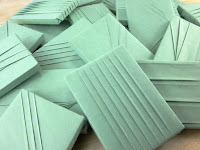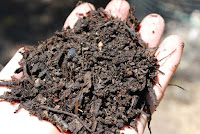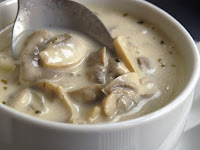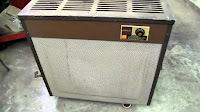Doing things on a shoe string budget has not been ideal. If things had gone along with my original five-ten year plan, we would have been a lot farther along with our progress, but you what they say about plans when it collides with Murphy's Law. To digress here, I often mention Murphy's Law on this blog. That's because I'm Irish (by marriage) and a Murphey. It seems to fit when things don't go as planned. But back to my review of the last three years of change to this endeavor.
 We hit some major financial roadblocks along the way. First was Mel losing her job. Not that she was bringing in huge amounts of money (less than $400 every week), but it allowed her to mostly meet her own bills. My income was from a government Social Security Disability and a monthly retirement check. Not that this is a small sum of monthly income, but it was enough to meet my bills. The nest eggs I had upon my husband's death included my old homestead and a sizeable stamp collection.Both would need to be sold to get the money from them. The property was appraised at twice the purchase price. But it sold for less than the original price we bought it to get out from under the mortgage with the added burden of Mel's financial burden added to mine was too great. The stamp collection is still waiting for a buyer at 30% of market value ($125 K). It's a huge collection of pre-1940 world wide stamps, letters,EFO, and such.
We hit some major financial roadblocks along the way. First was Mel losing her job. Not that she was bringing in huge amounts of money (less than $400 every week), but it allowed her to mostly meet her own bills. My income was from a government Social Security Disability and a monthly retirement check. Not that this is a small sum of monthly income, but it was enough to meet my bills. The nest eggs I had upon my husband's death included my old homestead and a sizeable stamp collection.Both would need to be sold to get the money from them. The property was appraised at twice the purchase price. But it sold for less than the original price we bought it to get out from under the mortgage with the added burden of Mel's financial burden added to mine was too great. The stamp collection is still waiting for a buyer at 30% of market value ($125 K). It's a huge collection of pre-1940 world wide stamps, letters,EFO, and such.But all in all, this Cockeyed Homestead is paid for with no mortgage. Yearly property taxes are $200 versus the property taxes on my old homestead of $1200 per year. The property is not ideal for a homestead by any stretch of the imagination. We have a 100' drop of a ravine leading down to the spring fed creek with only 1/4 acre of semi flat land to do anything with. We are 100' drop from the main road with a very long driveway. It's a challenge during the winter months with the snow and ice with my front wheel drive Toyota Sienna mini van.
My first focus was on the angora rabbits, chickens and food. Nothing is as bleak as sitting on your homestead with no money coming in (besides your standard amount) and having a empty pantry. The chickens and angoras, Mel had. I processed my hens and brought my meat rabbits and an angora. The whole idea behind self sufficiency is producing income and to meet our needs from the homestead.The rabbits and chickens pay their own way with fiber and egg sale throughout the year.
The fact that this property was left abandoned for a minimum of ten years was a plus for organically grown food stuffs (gardening). But the fact that it was abandoned for so long meant the whole area was overgrown badly with vegetation that has to be cleared. It only takes money, right?
The first nest egg I got was back payment from my Social Security Disability. That went to buy a small repoed storage building (8x10) and changing the garden layout from one hardiboard 4x8 raised bed and one 20' row. We intended to use the storage building as a rabbitry. Heavy additions of peat moss, compost, and perlite went into the heavy clay soil to loosen it for planting. We built three 4x6 raised beds and scattered the remaining area with straw and manure. Mel turned all of this in by hand with a garden fork. It was the beginning of our self sustainable, organic garden. This first year, we only planted the raised beds. I had to relearn how to garden in this north Georgia climate zone. We planted a variety of plants to see which would grow the best. While Mel had dabbled with growing plants to harvest over two years, she wasn't focused on production like I was. I wanted to make every inch count.
The next big nest egg came from the sale of my old homestead. It wasn't much but it did provide for a much needed driveway, a new rabbitry barn, a new chicken coop and run, and 1/4 acre of additional cleared and terraced land to plant an orchard. It also took care of some much needed household repairs/replacement like plumbing and electrical work.
 Now, we are back to nickles and dimes to work our way to a self sufficient, organic lifestyle with some major infrastructure items taken care of. As you can imagine, there are still tons of things that need to be done. I'm saving my pennies by growing fruit trees from store bought fruit and nuts to grow. This will take a long time to do unless I find established fruit trees like I did with the apple trees last year. Still bargains happen. Until then, I'll let my seedlings grow. We've got time and we aren't going anywhere. We're in this for the long haul.
Now, we are back to nickles and dimes to work our way to a self sufficient, organic lifestyle with some major infrastructure items taken care of. As you can imagine, there are still tons of things that need to be done. I'm saving my pennies by growing fruit trees from store bought fruit and nuts to grow. This will take a long time to do unless I find established fruit trees like I did with the apple trees last year. Still bargains happen. Until then, I'll let my seedlings grow. We've got time and we aren't going anywhere. We're in this for the long haul.We still need to extend the driveway and add another car park area to the back side of the house. This is a luxury and convenience expense. Since the barn/workshop is complete now, except for the feed store room, we can always park in the old car park area and trudge to the house. This will be easier after I get my foot fixed. I'm still waiting on that. Hopefully by next winter.
Meanwhile, Mel will be working on the feed storage room. We've already obtained the heavy blue pallets for the floor. Now it's gathering enough feed sacks for the interior and exterior walls and building the walls. Since she is using pallets, some will have to be ripped apart to have enough supports and planks to do the walls inside and out. I will have to buy some (6) 4x8 sheets of plywood for the roof and floor, but that's chump change when it comes to construction costs.
In three years, we have become self sufficient in 75% of our vegetable and fruit intake for a year. Next year, I'm shooting for 97% with the addition of two dairy goats. Only 97% because we like some vegetables and fruits that won't grow here like bananas, pineapples, wheat and sugar. The orchard area is plantable now (or will be in the spring) for vegetables while awaiting fruit and nut trees, and more berries and grapes. I'm aiming for 50% of livestock hay and feed for the animals. But even if we have to buy the seeds to sprout the other 50% that's not bad. That means more profits for us to utilize for future projects. We should get a higher yield this fall of all. The orchard soil is better with fewer Mother Nature planted weeds. Not bad for two years of labor.
 Mel and Whirling Dervish have already polished off a gallon of my homemade wine. I think its a hit. At this rate of consumption, they'll go through my 5 1/2 gallons of wine in no time. Next year, I'll make 10 gallons worth. Lushes that they are. Just joking, I do want some to share. Of course, that will mean a larger sugar purchase too. I've got almost a year to budget that in. Considering I use sugar to make syrups, jams, jellies, baking, Mel's sweet tea, and wine all real, good for you food with only 50 lbs of sugar a year, I'm doing really well in that area. So an extra twenty pounds of sugar is no hardship. Wine costs a whole lot more in the grocery or liquor stores almost the price for one commercial bottle is equaled to the cost of 20 lbs of sugar.
Mel and Whirling Dervish have already polished off a gallon of my homemade wine. I think its a hit. At this rate of consumption, they'll go through my 5 1/2 gallons of wine in no time. Next year, I'll make 10 gallons worth. Lushes that they are. Just joking, I do want some to share. Of course, that will mean a larger sugar purchase too. I've got almost a year to budget that in. Considering I use sugar to make syrups, jams, jellies, baking, Mel's sweet tea, and wine all real, good for you food with only 50 lbs of sugar a year, I'm doing really well in that area. So an extra twenty pounds of sugar is no hardship. Wine costs a whole lot more in the grocery or liquor stores almost the price for one commercial bottle is equaled to the cost of 20 lbs of sugar.I also want to start making a lot of products I buy at the grocery store like vanilla extract. I recently bought a bottle of pure vanilla extract. Wow! It was expensive. I'll have to source vanilla beans for this. The only thing else I need is vodka at least 90 proof. Now this is something I haven't bought in 30+ years. I imagine there will be a sticker shock at the price of this too. There are other extracts to make also. I can get some pretty nice bottles at the Dollar Tree for it to go into or leave them in their wide mouth qt jars. Online I found a recipe for corn syrup. Since we've started growing our own Non GMO corn, it's a no brainer to get this GMO laden product off our pantry shelf. I'll just have to plant two dozen more corn plants to make the syrup and the short fall of corn to process to be 100% self sustainable in this too. If only I could grow my own vanilla beans, but we are not in the right zone for that.
So that is my review of future past. I know things may not have gone the way I planned. Isn't that the case most times? But in the end, we'll get there. One baby step at a time God willing. One small blessing at a time.
Y'all have a blessed day!
Jo













































